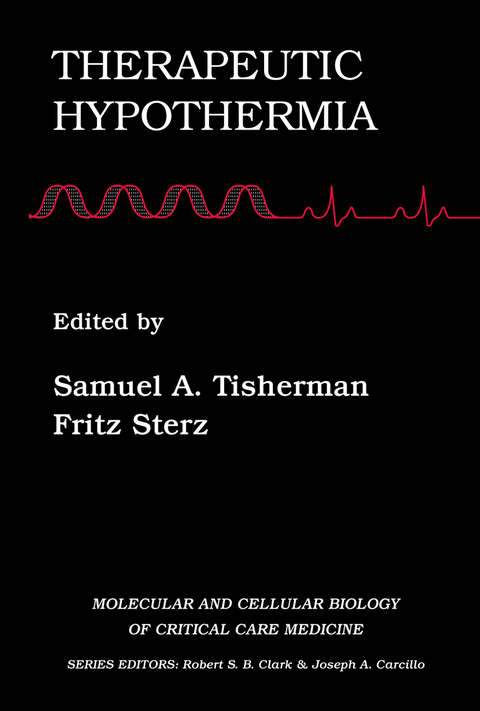
Therapeutic Hypothermia
Seiten
2010
|
Softcover reprint of hardcover 1st ed. 2005
Springer-Verlag New York Inc.
978-1-4419-3793-3 (ISBN)
Springer-Verlag New York Inc.
978-1-4419-3793-3 (ISBN)
Samuel A. Tisherman, MD', Fritz Sterz, MD~ '~niversit~ of Pittsburgh, Pittsburgh, PA, USA 2~edical University of Vienna, Vienna, Austria The use of hypothermia for a variety of therapeutic purposes has a long and erratic history. Hippocrates recommended the use of topical cooling to stop bleeding. Fay used cooling of the extremities for patients with tumors in the 1930s. It wasn't until the 1950s, when the effects of hypothermia on systemic oxygen metabolism became better defined, that systemic hypothermia became a commonly used modality, particularly for cardiac surgery. Hypothermia was used for protection (treatment before the insult) and preservation (treatment during the insult) of the heart and entire organism during planned operative ischemia. Shortly thereafter, attempts were made to use hypothermia for resuscitation (treatment after the insult) from cardiac arrest and for management of head trauma. At that time, it was felt that moderate hypothermia (28-32OC) was needed. This was difficult to achieve and manage. Multiple complications were noted. Consequently, therapeutic, resuscitative hypothermia lay dormant for many years while mild (32-35°C) to moderate hypothermia became common for many cardiothoracic and neurosurgical procedures. In the early 1990s, it was found that mild hypothermia, even after cardiac arrest, had benefit for the brain. Similar results were found with head trauma. This lead to a burst of enthusiasm for research into resuscitative hypothermia for a variety of insults, most of which have tissue ischemia as a major component.
Global Brain Ischemia: Animal Studies.- Global Cerebral Ischemia: Clinical Studies.- Focal Cerebral Ischemia: Mechanisms.- Focal Cerebral Ischemia: Clinical Studies.- Traumatic Brain Injury: Laboratory Studies.- Traumatic Brain Injury: Clinical Studies.- Spinal Cord Ischemia and Trauma.- Asphyxia.- Neonatal Asphyxia.- Hemorrhagic Shock and Exsanguination Cardiac Arrest.- Adult Respiratory Distress Syndrome and Sepsis.- Liver Failure and Intracerebral Hypertension.- Myocardial Ischemia and Infarction.- Cooling Methods.- Detrimental Effects of Hypothermia.- Future Directions.
| Erscheint lt. Verlag | 23.11.2010 |
|---|---|
| Reihe/Serie | Molecular & Cellular Biology of Critical Care Medicine ; 4 |
| Zusatzinfo | XIV, 258 p. |
| Verlagsort | New York, NY |
| Sprache | englisch |
| Maße | 155 x 235 mm |
| Themenwelt | Medizin / Pharmazie ► Medizinische Fachgebiete ► Intensivmedizin |
| Studium ► Querschnittsbereiche ► Klinische Umweltmedizin | |
| ISBN-10 | 1-4419-3793-5 / 1441937935 |
| ISBN-13 | 978-1-4419-3793-3 / 9781441937933 |
| Zustand | Neuware |
| Haben Sie eine Frage zum Produkt? |
Mehr entdecken
aus dem Bereich
aus dem Bereich
Buch | Softcover (2023)
American Psychological Association (Verlag)
CHF 176,30
An Interdisciplinary Textbook
Buch | Softcover (2024)
Oxford University Press (Verlag)
CHF 69,80
The New Science of the Microbiome
Buch | Softcover (2023)
Penguin Life (Verlag)
CHF 29,65


